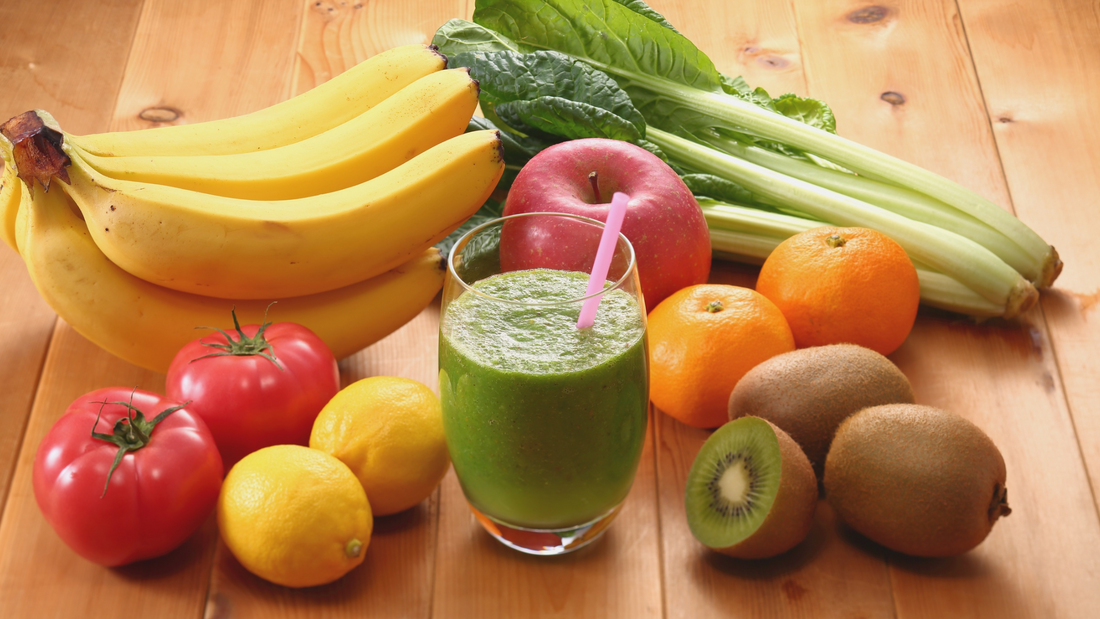
Key Nutrient-Rich Plants to Fill the Hidden Hunger Gap
Around the world, people are consuming more calories than ever before—but often with fewer essential nutrients. This phenomenon, known as hidden hunger, occurs when diets provide sufficient energy but lack key micronutrients such as iron, vitamin A, zinc, and omega-3 fatty acids. Hidden hunger is linked to fatigue, weakened immunity, poor cognitive function, and higher risks of chronic disease (Muthayya et al., 2013).
At Wellsprout, we believe the solution lies in reintroducing nutrient-dense plants into modern diets. By thoughtfully blending ingredients that have been scientifically studied for their health benefits, we aim to address nutritional gaps with natural, accessible, and sustainable options.
Wellsprout Ingredients and Their Nutrient Benefits
Wheatgrass and Barley Grass
Both wheatgrass and barley grass are packed with chlorophyll, vitamins A, C, E, and K, iron, calcium, and magnesium. Studies suggest they may reduce oxidative stress, improve digestion, and support liver detoxification (Kulkarni et al., 2006).
Psyllium Husk
Known for its high soluble fiber content, psyllium husk helps regulate digestion, improve gut microbiota, and support healthy cholesterol levels (Pal et al., 2011).
Chicory Root
Chicory is a natural source of inulin, a prebiotic fiber that nourishes beneficial gut bacteria. Research shows it can improve calcium absorption and contribute to better bone health (Scholz-Ahrens et al., 2007).
Flaxseed
Flaxseed offers a rich source of alpha-linolenic acid (ALA), lignans, and fiber. ALA, an omega-3 fatty acid, is linked to cardiovascular protection, while lignans provide antioxidant and hormone-balancing effects (Adolphe et al., 2010).
Chamomile
Traditionally used as a calming herb, chamomile also demonstrates anti-inflammatory and antioxidant effects. Studies suggest it supports digestive comfort and may reduce stress-related symptoms (Srivastava et al., 2010).
Tarragon
Often overlooked, tarragon contributes antioxidant compounds and micronutrients like manganese and iron. Early studies highlight its potential in blood sugar regulation (Obolskiy et al., 2011).
Wellsprout’s Perspective
Hidden hunger is not a distant issue—it affects people in both developing and developed countries. The challenge is to go beyond calories and restore nutrition to its rightful place at the center of food.
At Wellsprout, we don’t see supplements as quick fixes. We see them as bridges—connecting modern lifestyles with the wisdom of nutrient-rich plants. Our blends are designed to address hidden hunger by combining fibers, antioxidants, micronutrients, and omega-3s in an accessible daily ritual.
References
- Adolphe, J. L., Whiting, S. J., Juurlink, B. H., Thorpe, L. U., & Alcorn, J. (2010). Health effects with consumption of the flax lignan secoisolariciresinol diglucoside. British Journal of Nutrition, 103(7), 929–938. https://doi.org/10.1017/S0007114509992815
- Kulkarni, S. D., Tilak, J. C., Acharya, R., Rajurkar, N. S., Devasagayam, T. P. A., & Reddy, A. V. R. (2006). Evaluation of the antioxidant activity of wheatgrass (Triticum aestivum L.) as a function of growth under different conditions. Phytotherapy Research, 20(3), 218–227. https://doi.org/10.1002/ptr.1844
- Muthayya, S., Rah, J. H., Sugimoto, J. D., Roos, F. F., Kraemer, K., & Black, R. E. (2013). The global hidden hunger indices and maps: An advocacy tool for action. PLoS One, 8(6), e67860. https://doi.org/10.1371/journal.pone.0067860
- Obolskiy, D., Pischel, I., Siriwatanametanon, N., & Heinrich, M. (2011). Artemisia dracunculus L. (tarragon): A critical review of its traditional use, chemical composition, pharmacology, and safety. Journal of Agricultural and Food Chemistry, 59(21), 11367–11384. https://doi.org/10.1021/jf202277w
- Pal, S., Khossousi, A., Binns, C., Dhaliwal, S., & Ellis, V. (2011). The effects of psyllium on lipoproteins in overweight and obese individuals. British Journal of Nutrition, 106(5), 717–724. https://doi.org/10.1017/S0007114511000738
- Scholz-Ahrens, K. E., Schaafsma, G., van den Heuvel, E. G. H. M., & Schrezenmeir, J. (2007). Effects of prebiotics on mineral metabolism. The American Journal of Clinical Nutrition, 85(5), 1231S–1243S. https://doi.org/10.1093/ajcn/85.5.1231S
- Srivastava, J. K., Shankar, E., & Gupta, S. (2010). Chamomile: A herbal medicine of the past with a bright future (Review). Molecular Medicine Reports, 3(6), 895–901. https://doi.org/10.3892/mmr.2010.377